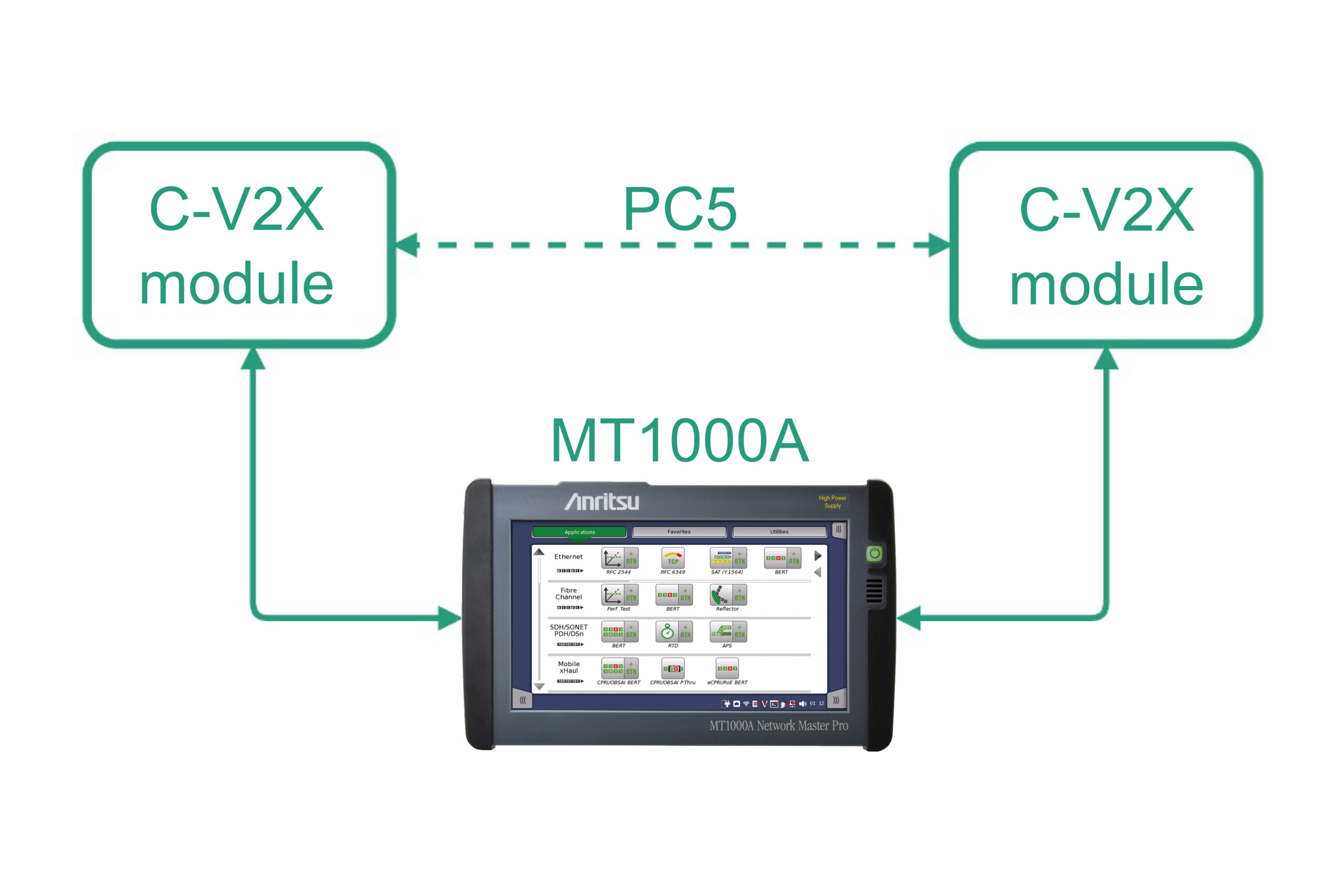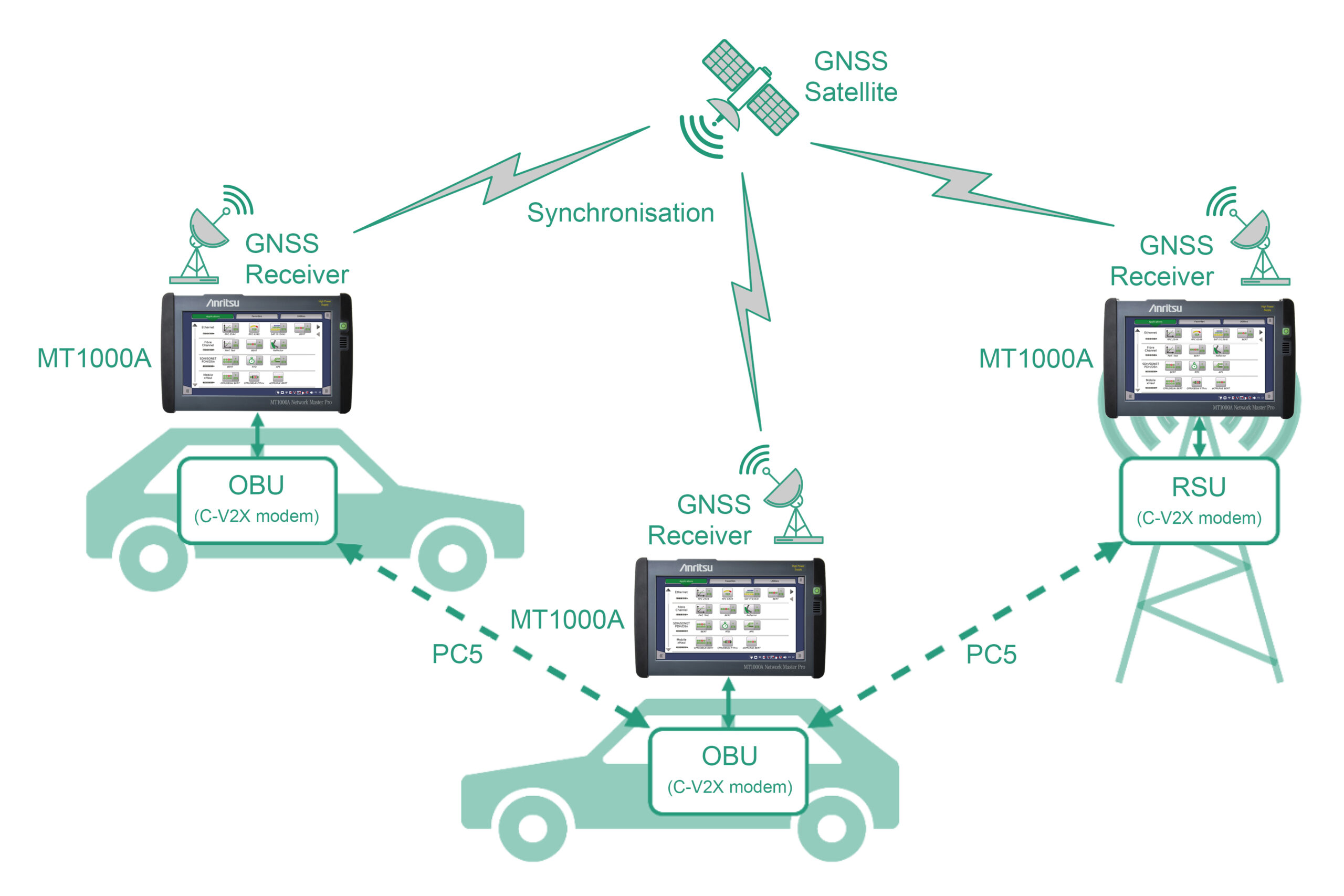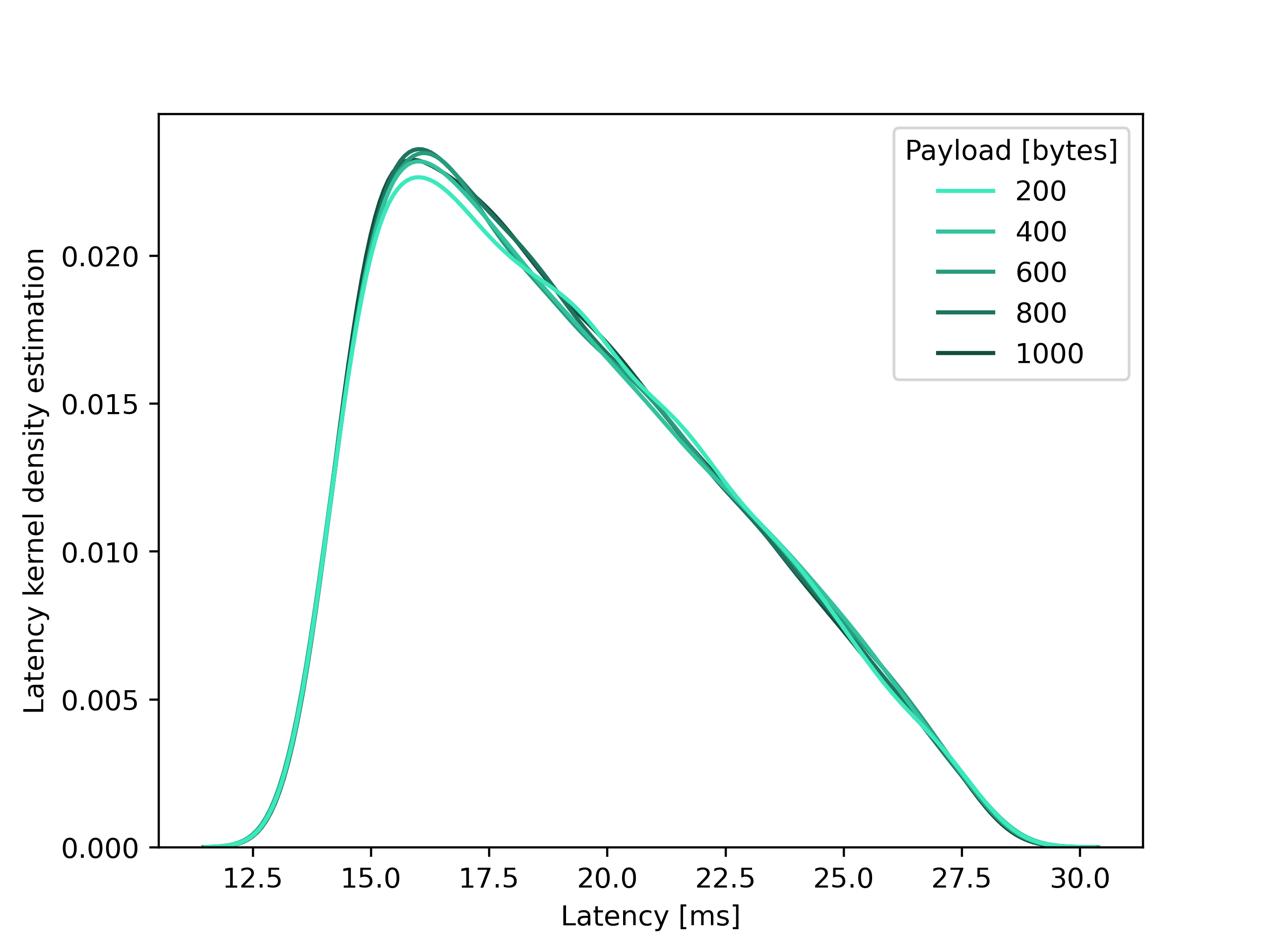C-V2X was specifically designed for efficient, low-latency, high-data throughput message exchange within the immediate surroundings of a vehicle. In direct communication mode using PC5, C-V2X does not require any network infrastructure. It features a robust physical layer that incorporates a higher density of reference signals, robust modulation and coding schemes as well as channel coding. A vehicle with C-V2X using PC5 can communicate directly in three ways — vehicle-to-vehicle (V2V), vehicle-to-infrastructure (V2I) and vehicle-to-pedestrians (V2P).
LTE PC5 Communication
The LTE PC5 interface standard is based on the LTE physical layer, with some adjustments specifically for vehicle communications:
- Independence from network infrastructure – For lower latency and faster information sharing without the need to establish a network connection. It also enables communications when outside cellular network coverage.
- Broadcasting – Does away with precise addressing of information, for simpler and faster dissemination of information.
- Robustness to transmitter and receiver movement at high speed – Achieved by the adoption of single-carrier frequency division multiple access (SC-FDMA), robust modulation for control information, the use of an additional guard period at the end of the subframe, and the use of a demodulation reference signal (DMRS).
C-V2X direct mode use cases
Use cases for V2X with PC5 could include:
Emergency brake warning – A vehicle in front performs a sudden braking maneuver. The vehicle behind could be at risk of collision. With sufficient warning via PC5 communication, the vehicle behind can brake as soon as the leading vehicle does. The required service level latency for this use case is 120ms.
Intersection collision warning – Vehicles approaching a crossing may have their view obstructed. Situational awareness becomes compromised, increasing the risk of collisions. PC5 can help make the vehicles aware of each other even when out of the line of sight. The required service level latency is 100ms.
Test setup
A test setup to evaluate latency performance of the LTE PC5 interface, shown in Figure 1, comprises one Anritsu MT1000A multifunction tester connected to two C-V2X modules that are placed 50m apart. The two C-V2X modules are configured to communicate unidirectionally via the PC5 interface, working in mode 4 (out of cellular network coverage).
Using this test setup, the latency of the full ITS stack can be measured from the physical to the message/facilities layer. The MT1000A uses its internal clock to timestamp UDP packets and measure the latency with a precision of 0.1 microseconds.

This test setup can be easily adapted for field testing by using two or more MT1000A units. Figure 2 shows a setup, where the latency between onboard units and RSUs can be measured. All the MT1000As are time synchronized using the GNSS signal, so they can be placed at an arbitrary location and be mobile.

Measured PC5 latency performance
The PC5 latency measurements were done using the test setup as described in Figure 1 – with one MT1000A and two C-V2X modules.
PC5 latency was measured using the following settings to simulate realistic message sizes:
- Modulation and coding scheme (MCS) number 15 was used, i.e. using 16QAM modulation – with a coding rate of 0.652 and a 15.648Mbps burst data bit rate.
- Bandwidth – 10MHz with 5 subchannels (of 12 subcarriers each).
- Packet generation rate – 10 and 100 packets per second (PPS).
- Payload sizes – 200, 400, 600, 800 and 1000 bytes.
When packet generation is set to 10PPS, measured latency ranges from 13.5ms to 28.3ms, with an average of 19.1ms, across different payload lengths. The latency kernel density estimation (KDE), obtained from the probability density estimation after applying kernel smoothing, is shown in Figure 3, and exhibits a distinctive positive skew.

When packet generation is set to 100PPS, latency ranges from 12.9ms to 27.8ms, with an average of 18.6ms for payload sizes of 200 and 800 bytes. The KDE is shown in Figure 4, and has a distinctive positive skew, with small valley 21ms. For payload sizes of 1,000 bytes, latency ranges from 13.4ms to 27.8ms, with an average of 19.6ms. Here, the KDE is not as skewed, but still shows a small valley at 21ms.

| Payload [bytes] | 200 | 400 | 600 | 800 | 1,000 | |
| 10PPS | Latency minimum [ms] | 13.571 | 13.574 | 13.531 | 13.61 | 13.562 |
| Latency average [ms] | 19.175 | 19.168 | 19.15 | 19.126 | 19.112 | |
| Latency maximum [ms] | 28.214 | 28.303 | 28.188 | 28.299 | 28.184 | |
| 100PPS | Latency minimum [ms] | 12.872 | 12.856 | 12.902 | 12.859 | 13.222 |
| Latency average [ms] | 18.557 | 18.59 | 18.588 | 18.591 | 19.574 | |
| Latency maximum [ms] | 27.733 | 27.766 | 27.792 | 27.701 | 27.836 |
Table 1: The latencies for different payload sizes and packet generation frequencies
As the measurements show, LTE PC5 end-to-end latency is well within the limits of V2X use-cases. However, further testing will be necessary to measure the latency under different conditions, such as with interference or under congestion conditions.
MT1000A Network Master Pro
MT1000A is an all-in-one field tester that can be used to evaluate a variety of communications network parameters – including quality parameters such as latency, jitter, pattern or sequence errors and packet loss.
For testing V2X latency, the MT1000A uses a custom application protocol where the end-to-end latency is calculated as the difference between the timestamp taken when the packet is sent and the timestamp taken when the packet is received. The precision of the latency measurement is in the microsecond range, enabling reliable measurements and detailed analysis. The MT1000A features a modular design, with different modules supporting combined 10G/100G ethernet, OTN, SONET/SDH, OTDR and other technologies. MT1000A software is flexible, easy to use and enables automated testing.
Conclusion
Low latency is one of the main advantages of V2X. It therefore important to be able to evaluate with latency with confidence. Such testing should be done in all phases, be it module testing during development, or under real-life conditions once deployed. All these aspects can be tested with the all-in-one MT1000A handheld network tester.


